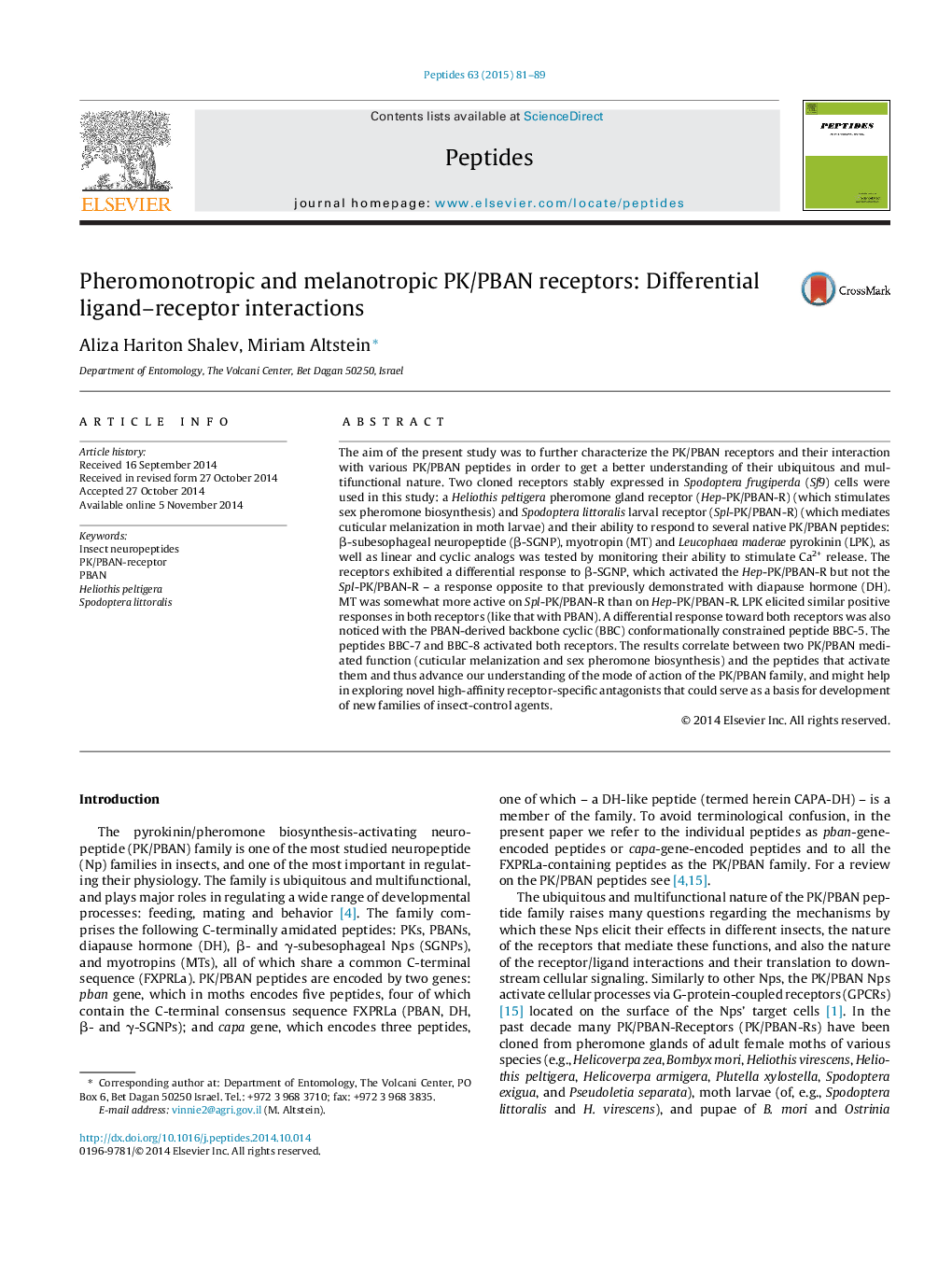| Article ID | Journal | Published Year | Pages | File Type |
|---|---|---|---|---|
| 8348186 | Peptides | 2015 | 9 Pages |
Abstract
The aim of the present study was to further characterize the PK/PBAN receptors and their interaction with various PK/PBAN peptides in order to get a better understanding of their ubiquitous and multifunctional nature. Two cloned receptors stably expressed in Spodoptera frugiperda (Sf9) cells were used in this study: a Heliothis peltigera pheromone gland receptor (Hep-PK/PBAN-R) (which stimulates sex pheromone biosynthesis) and Spodoptera littoralis larval receptor (Spl-PK/PBAN-R) (which mediates cuticular melanization in moth larvae) and their ability to respond to several native PK/PBAN peptides: β-subesophageal neuropeptide (β-SGNP), myotropin (MT) and Leucophaea maderae pyrokinin (LPK), as well as linear and cyclic analogs was tested by monitoring their ability to stimulate Ca2+ release. The receptors exhibited a differential response to β-SGNP, which activated the Hep-PK/PBAN-R but not the Spl-PK/PBAN-R - a response opposite to that previously demonstrated with diapause hormone (DH). MT was somewhat more active on Spl-PK/PBAN-R than on Hep-PK/PBAN-R. LPK elicited similar positive responses in both receptors (like that with PBAN). A differential response toward both receptors was also noticed with the PBAN-derived backbone cyclic (BBC) conformationally constrained peptide BBC-5. The peptides BBC-7 and BBC-8 activated both receptors. The results correlate between two PK/PBAN mediated function (cuticular melanization and sex pheromone biosynthesis) and the peptides that activate them and thus advance our understanding of the mode of action of the PK/PBAN family, and might help in exploring novel high-affinity receptor-specific antagonists that could serve as a basis for development of new families of insect-control agents.
Related Topics
Life Sciences
Biochemistry, Genetics and Molecular Biology
Biochemistry
Authors
Aliza Hariton Shalev, Miriam Altstein,
